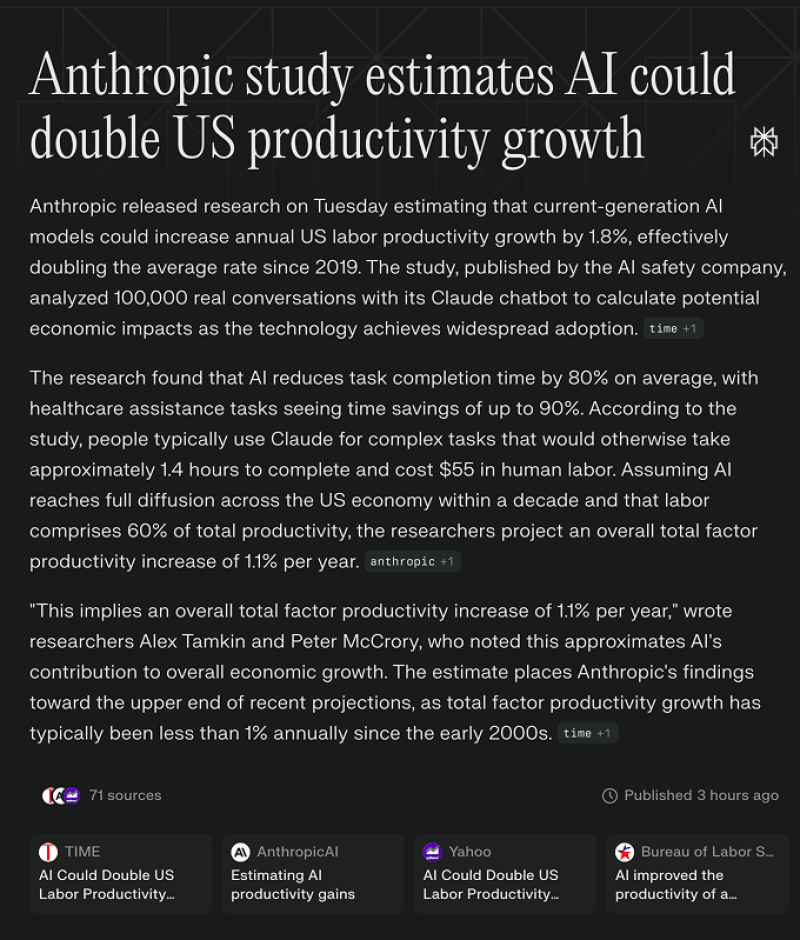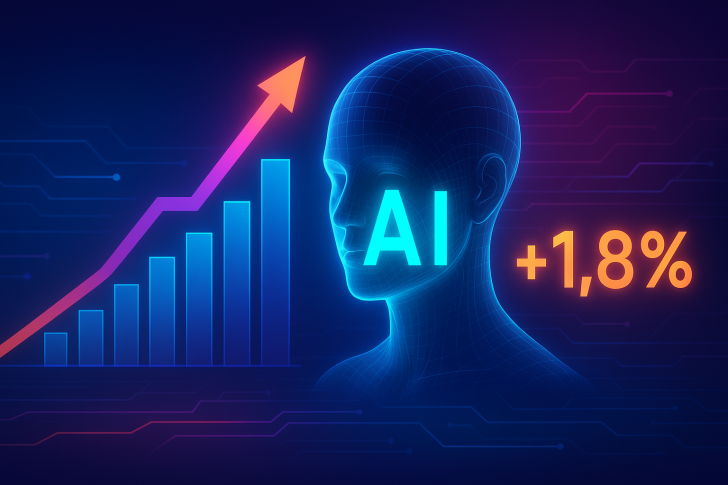⬤ Anthropic just dropped research showing current AI systems could seriously speed up US productivity growth. The company dug into 100,000 actual user conversations with its Claude chatbot to figure out how AI tools might reshape economic output. Bottom line: AI automation could bump annual US labor productivity growth by about 1.8%, basically doubling what we've seen since 2019.

⬤ The data reveals AI cuts task completion time by roughly 80% on average, with healthcare support work hitting close to 90% time savings. Users typically turn to Claude for jobs that would normally eat up around 1.4 hours and cost about $55 in human labor. We're talking complex, multi-step work that AI handles more smoothly by cutting through information overload and speeding up decisions.
⬤ Anthropic took these efficiency numbers and scaled them across the whole economy. Since labor makes up about 60% of total productivity, researchers figure full AI adoption over the next ten years could push total factor productivity up by roughly 1.1% yearly. That's at the high end of recent forecasts, especially since total factor productivity growth has mostly stayed under 1% per year since the early 2000s. The takeaway: if AI assistants spread across professional and everyday settings, we could see a real shift in long-term productivity patterns.
⬤ Why this matters: productivity growth drives economic expansion, business profits, and job market health. If AI keeps slashing task times at this scale, sectors from healthcare to office work could see major changes in what they can produce. This research highlights how fast-moving AI tech is becoming a bigger piece of the puzzle when trying to predict where the economy's headed next.
 Eseandre Mordi
Eseandre Mordi

 Eseandre Mordi
Eseandre Mordi


